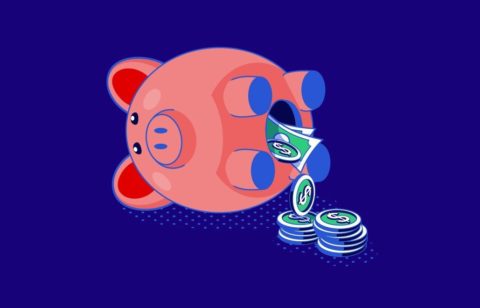
Dealing with the burden of debt is difficult. Dealing with debt with bad credit is even worse.
Bad credit can make it next to impossible to obtain many of the most common and effective debt relief options available. While less-than-stellar credit doesn’t completely prevent an individual from getting debt relief, it can make it more difficult.
What qualifies as bad credit?
The simplest measure of the quality of a person’s credit is a FICO score. Generally, a “bad” credit score is anything under 630.
Different lenders will make their own determinations as to whether a person is creditworthy or not, but that’s where most organizations draw the line.
An algorithm is in use to calculate an individual’s FICO score, considering five metrics: payment history, amounts owed, length of credit history, types of credit used, and new credit.
Payment history and amounts owed weigh the most heavily in the calculation. A person with a history of delinquent payments and maxed-out credit cards will likely have a poor credit score as a result.
Why is it harder to get relief when you have debt with bad credit?
Many forms of debt relief are based on lending, and most forms of lending are based on creditworthiness.
The most common form of debt consolidation, for example, is a personal loan. An individual goes to a lender and asks for a loan equal to the amount of various debts. The individual uses that loan to pay off all of his or her debts at once, and then focuses on paying down the loan.
For that process to work out, the loan has to be more favorable to the various smaller debts. It has to have a lower interest rate and cost less over time to pay off.
Getting a good loan (or any loan) with bad credit can be impossible. Lenders see a credit score under 630 and assume that the individual applying for the loan has a history of not paying back debts. In the lender’s eyes, lending to that individual is just too risky.
If a lender does approve someone with bad credit for debt consolidation, it’ll often try to hedge its bets with risk-based pricing. Usually, this means drastically increased interest rates on the loan. For an individual with bad credit, these increased interest rates can lead to a loan that offers little to no benefit past consolidating monthly payments. In that scenario, the loan usually isn’t worth it.
Bad credit debt relief options
Bad credit might make it impossible for someone to find a decent personal loan to consolidate debt, but that doesn’t there are no other options. Credit counseling, balance transfers, and debt settlement are all on the table.
Credit counseling
Credit counseling usually entails working with a non-profit credit counselor that specializes in helping individuals to manage debt.
Credit counselors work on a debtor’s behalf to negotiate lower interest rates on the debt and set up a manageable repayment plan with creditors. Each month, the debtor makes a single payment to the credit counselor, which uses the money to pay the creditors, essentially consolidating the debt.
In addition, the credit counselor may also take steps to make the debtor more financially responsible in the future. Most commonly, it will make the debtor close all credit accounts at the outset of the program.
Since there’s no lending involved in credit counseling, bad credit isn’t an issue. In fact, most people that undergo credit counseling have a history of bad credit. Credit counseling is a widely inclusive solution to debt.
Balance transfers
Many credit cards offer 0% introductory interest rates as a way to attract new cardholders. By transferring a chunk of existing credit card debt to one of these no-interest cards, an individual can aggressively pay down debt without accruing new interest.
To qualify for one of these cards, an individual needs to have a good credit score, which isn’t always the case.
Additionally, this method typically works only for individuals juggling smaller amounts of credit card debt. The balance transfer card will likely only have an available balance of a few thousand dollars, which might not be enough to make a difference for many people in deep debt.
Still, a balance transfer can be a simple, accessible method of debt relief that allows an individual to pay down debts much more effectively than would be possible otherwise.
Debt settlement
With debt settlement, a debtor works with a company that negotiates with creditors on the debtor’s behalf. Ideally, the company is able to reach a settlement in which the creditor only pays a fraction of the total debt as a settlement.
During the debt settlement process, the debtor stops making payments directly to creditors, instead paying into a savings account managed by the debt settlement company. After enough money is in the account, the debt settlement company contacts the creditors with a deal: take a reduced lump sum payment now and forgive the remainder of the individual’s debt. More often than not, the creditors take the deal.
Understanding debt settlement means understanding the significant pros and cons inherent to the process.
On the pro side, debt settlement can save a debtor a significant amount of money. Generally, an individual only ends up paying between 40% and 60% of the original balance. Since there’s no lending involved with settlement, an individual’s credit score doesn’t factor into the ability to participate in this option.
On the con side, debt settlement can take a huge toll on a person’s credit score. This drop happens because the process entails a person stopping all payments to creditors for a period that can last for several years.
Still, many people are willing to take the hit to their credit score in order to eliminate their debts, especially if that debt has caused them to have a low credit score already.
The most important thing someone with debt and credit problems should keep in mind is that they have plenty of options for eliminating debts. Bad credit might make things more complicated, but it doesn’t prevent an individual from finding relief.





